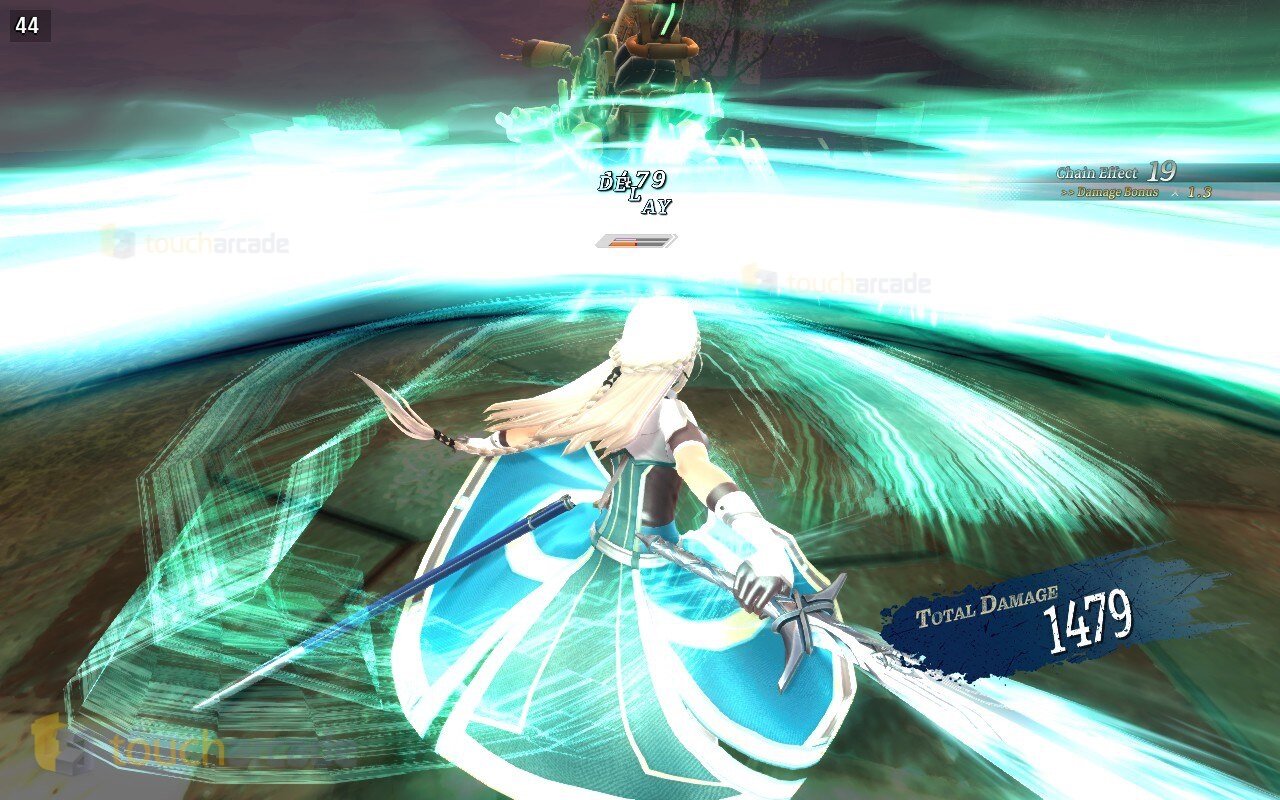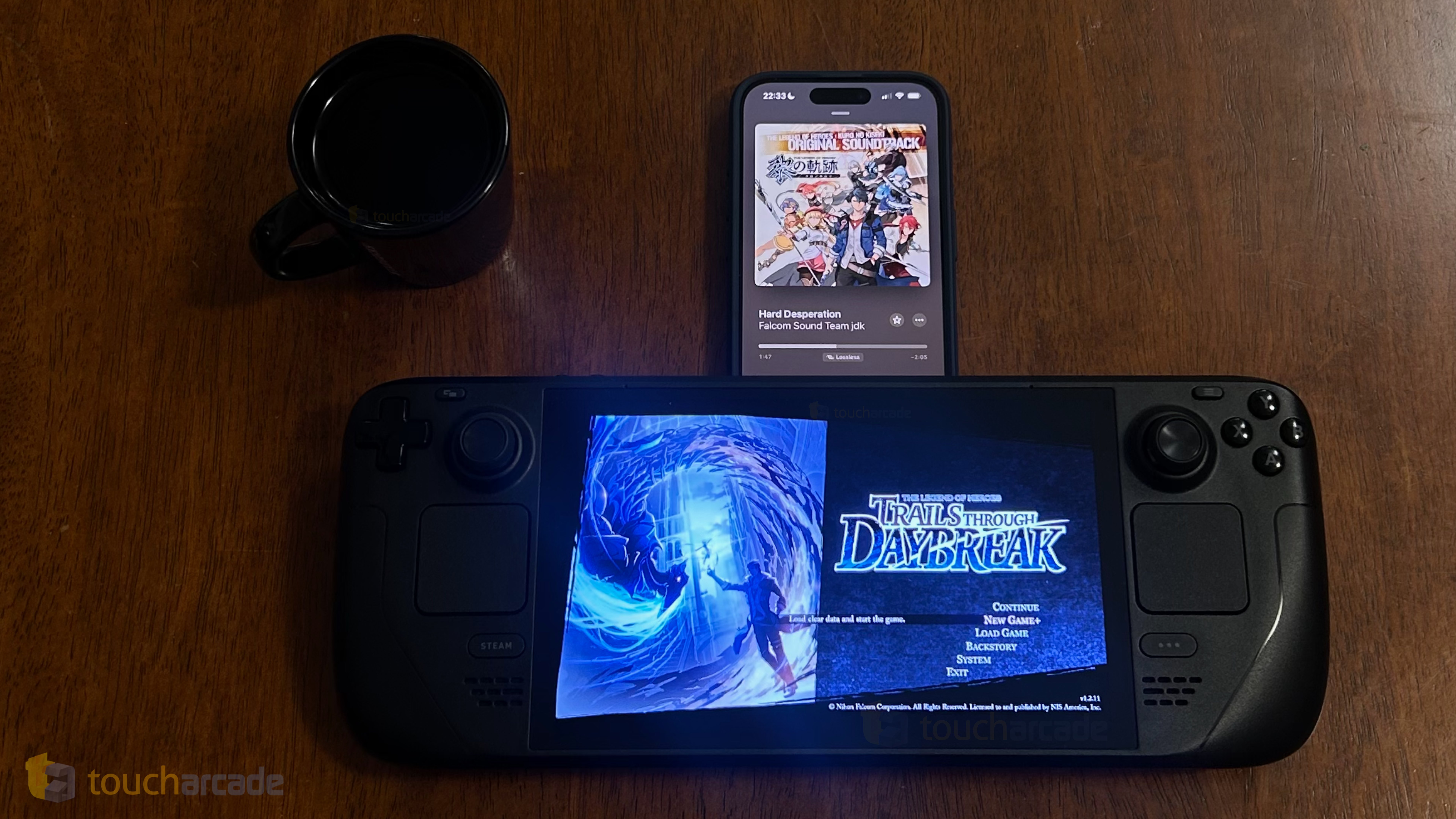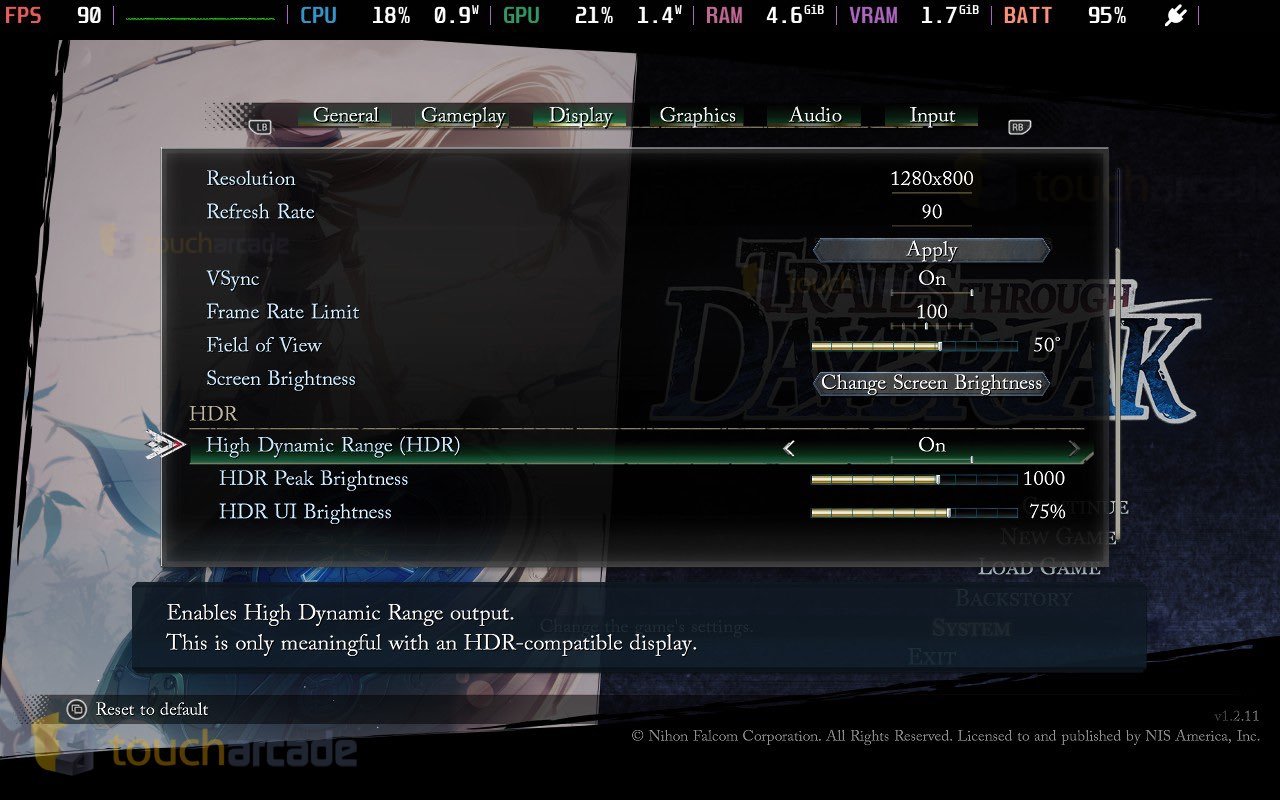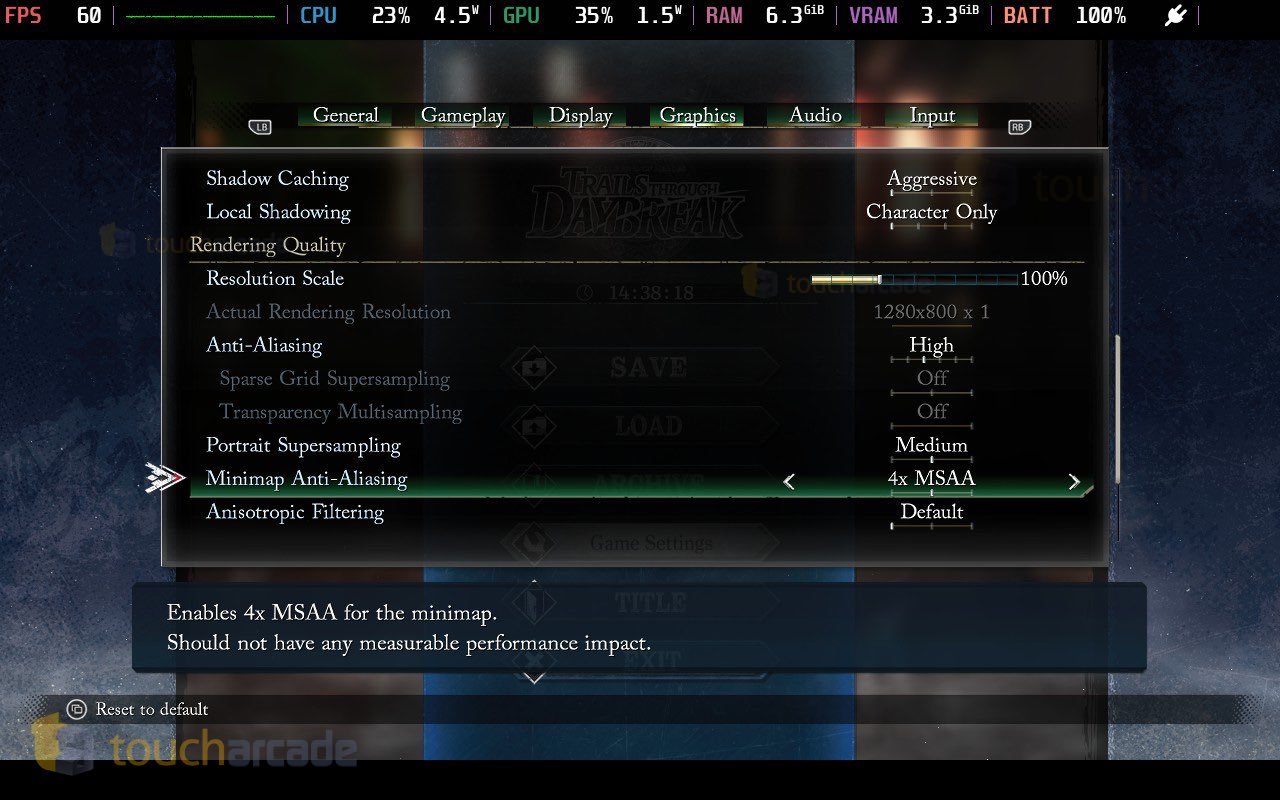The Legend of Heroes: Trails through Daybreak Review – Steam Deck, Switch, and PS5 Covered
Ever since its release in 2021 for Japan, my friends who play Falcom’s games kept telling me about how good The Legend of Heroes: Trails through Daybreak (henceforth Trails through Daybreak) was despite some rough edges at launch. It felt too good to be true back then because for a series like this, people (including myself) often joke about the barrier of entry across different platforms. I ended up trying the Japanese demo for Trails through Daybreak and was in love with the combat system and the visual upgrade. I had no idea about the story back then. Fast forward to today and I’ve played Trails through Daybreak across Steam Deck, PS5 (including the PS4 version), and Nintendo Switch. It is an incredible experience. I’m going to cover and compare every version I have access to, but this review will focus on the PC version on Steam Deck.

Trails through Daybreak is just special when it comes to its story, characters, and world. I’m not going to pretend like I suddenly like the older games less or anything because I love most of them, but Trails through Daybreak just feels like such a step up doing everything right without any ifs and buts. Usually, a Trails game recommendation from yours truly includes caveats like playing many other games to get the best experience, or even needing to have played prior games to not miss out on important plot points. We’ve had a few good entry points over the years like with Trails in the Sky (PC or PSP), Trails of Cold Steel (PS Vita, PS4, PC, and PS3), or even my recommendation on Switch which is the Crossbell duology. Right now, I can say that newcomers who want to play Trails and are completely new to it, can play Trails through Daybreak directly. Sure, having played earlier games gives me a better experience with context, returning characters, and seeing the world from this side, but I don’t have any hesitation in telling newcomers to play Trails through Daybreak directly. It is that damn good.
So what makes Trails through Daybreak’s story so special? It begins with Van Arkride who is a Spriggan. As a Spriggan, you take on the kinds of jobs the police don’t and will not bother doing. Set in Calvard (yes, finally!), Trails through Daybreak’s story begins with Van being approached by Agnes who needs help finding her late grandfather’s memento. As Van, you take on all kinds of quests that progress the story, or side quests that actually were interesting to do despite some still being obvious fetch quests with not even an attempt to hide things. Van is basically my favorite Trails protagonist already, and I feel like I might regret saying this in a year or so. I don’t care about that right now, but Trails through Daybreak’s Van is everything I wanted from this game in how he makes decisions, approaches different quests, important character moments, and more. Even the banter between the main cast is excellent.

As the story progresses with Van, you are joined by more from one of my favorite Falcom game casts ever, and I’m not exaggerating. You’d think Falcom might fumble and have some characters join with not enough screen time, but they thought things through here. Not only do characters like Judith and Risette have great designs, but they just elevate the whole plot throughout. Trails through Daybreak still is a Trails game, but it feels darker and more mature throughout, including in dealing with specific topics you don’t usually see in many Falcom games. Van and company definitely meet some interesting characters across the factions in the game.

With Trails through Daybreak, Falcom wasn’t just willing to change things up when it comes to the narrative and setting, but also give us a dramatically different combat system. When I see people excited for Atlus’ upcoming RPG Metaphor ReFantazio because of its combat system, I just remember how Trails through Daybreak did it first in 2021. If you’ve watched gameplay footage of Trails through Daybreak, you might think that you can either go with action (Field Battle) or turn-based (Command Battle) combat here. While you can make your way through most encounters with the former, some force you into Command Battles. I found myself enjoying the mix of both, and the system even lets you start off with one and switch to Command Battle with buffs or other stat changes. The action combat is pretty simple, but it helps that normal enemies don’t seem bloated when it comes to their HP.
Command battles feel like a step above what we had in Trails into Reverie here. When you initiate Command Battle, you can move within a blue circle and do normal attacks, change targets, perform Arts (using EP) that take time to activate, perform Crafts using CP, Shard Skills, use S-Crafts (with excellent cut-scenes), and much more. I feel like the Trails through Daybreak combat system has tons of potential even after how well-realized it is in this game. Being able to melt popcorn enemies around a more powerful foe using the action combat and then swapping to turn-based to take on the harder ones in a mob never gets old. I know I can try Trails through Daybreak II’s Japanese release to see how things changed, but I’m going to be patient for the localization and also see what happens in Kai no Kiseki (out this year in Japan).
In terms of gameplay structure, Trails through Daybreak is very much like a normal modern Trails game, but every aspect of the systems has been improved with the addition of an alignment system, much better sidequests, and generally a snappier experience. Not only does the game itself feel like the best Trails has ever been, but even subtle UI changes help make it feel modern.

Speaking of feeling modern, Trails through Daybreak is the first game on Falcom’s new (at the time) engine, and it shows. Obviously this isn’t cutting-edge, but Trails through Daybreak is a huge step up from the Cold Steel games and Reverie when it comes to visuals and even character models. Katsumi Enami’s character designs translate brilliantly to 3D models, and it was great seeing them return to the series after the excellent work in the Crossbell games. Outside character models and UI improvements, Trails through Daybreak looks gorgeous compared to earlier games. I already thought Trails of Cold Steel III was a step up from the first two games but Trails through Daybreak feels like we are finally a generation ahead. It also helps that the game scales really well making it retain its aesthetic even on the Switch.
If I had to pick one thing that didn’t hit as hard for me in Trails through Daybreak, it would be the music. As a huge fan of basically every Falcom game soundtrack, I felt like Trails through Daybreak was lacking as many great songs I wanted to listen to outside the game. While in-game, it was all good, but Falcom game soundtrack to me are always experiences outside the game as well. I’ve lost track of how many times I’ve heard the Crossbell, Trails of Cold Steel series, or Ys soundtracks. This isn’t a dealbreaker, but I was hoping for more songs I’d want to listen to outside the game beyond just seven or eight right now. Voice acting has been consistently great, and I’m glad the volume level issue I ran into with a few prior English dubs in the series isn’t present here.

Trails through Daybreak PC port features
So far I’ve had nothing but good things to say about Trails through Daybreak, and the PC port is only going to get more praise because it is one of the best PC ports I’ve ever played. PH3 went above and beyond here. Not only are all the features I’ve come to enjoy in the developer’s PC releases included, but there are a few I never thought I’d see in a modern Falcom game, including a PC-exclusive one. Before that, let’s cover what makes Trails through Daybreak’s PC port so good. Aside from graphics options, Trails through Daybreak on PC gives you more control over the high speed mode (turbo mode) letting you set different speedup factors for field exploration, field battles, and command battles. I used this mode almost all the time and still have ended up with more than 70 hours on Steam Deck as of my current save which is in new game plus. The PC version also lets you skip startup logos to save time when you want to resume your save. Speaking of saving time, as with PH3’s other ports, you can also directly resume from latest save when launching the game through Steam to save even more time.

When it comes to display and graphics options, strap in because there is a lot to cover here. Trails through Daybreak lets you adjust display mode (windowed, borderless, fullscreen), select monitor, resolution (320×200 up to 4K on my monitor), select refresh rate, toggle v-sync, adjust frame rate limit (30 to 360fps), adjust FOV (25 to 65), change screen brightness, and enable HDR on supported displays. The HDR setting in Trails through Daybreak is the first time any Falcom game has official HDR support as far as I’m aware. You can adjust HDR peak brightness and HDR UI brightness here. It looks amazing on my Steam Deck OLED.

On the graphics side, Trails through Daybreak lets you select from one of many presets (performance (aimed at low end laptops or handhelds), console (matching the PS5 experience outside resolution and frame rate), default, high (aimed at gaming PCs), and ultra (high end gaming PCs)). You can toggle motion blur, depth of field, adjust three different draw distance settings (character, level of detail, and light draw distance), shadow resolution, shadow filtering, shadow caching, and local shadowing. On the rendering quality side, you can adjust resolution scale (50% to 200%),

One more thing to note is you can preview the game image behind you as you change specific settings. This is also something I want to highlight as most games don’t let you see realtime differences when you are tweaking graphics options. For anti-aliasing, Trails through Daybreak lets you use basic screen-space AA, FXAA with a high quality profile, 2x MSAA, 4x MSAA, and 8x MSAA. You can also use sparse grid supersampling and transparency supersampling here. Aside from that, more quality options include portrait supersampling and minimap anti-aliasiing which dramatically improve the UI specifically. You might think these are small things, but having played Trails through Daybreak across basically all platforms in the last few weeks, these two specific settings generally make the PC version look like a lot more care went into it when you look at dialog with portraits and the minimap. The latter specifically looks poor on consoles.

The final graphics settings let you adjust screen space reflection quality, volumetric lighting quality, a high-resolution cubemap setting, and use a new water shader option from PH3. This specific setting requires reloading the current map. It is quite a nice option to have here. The screenshot above is zoomed in from my Steam Deck with the modern shader at the bottom and the original option on top.

When it comes to PC-exclusive features, aside from the big boost to frame rate target and resolutions that are obvious upgrades, Trails through Daybreak has a show BGM option that you can have display the current track name and soundtrack position. You can set this to only have it display when a new song is encountered or display it at all times. This feature was in the Crossbell games and it is amazing to see it brought to Trails through Daybreak since the console versions don’t have it. Trails through Daybreak on PC also has full keyboard and mouse support as expected from PH3. I didn’t test this though as I played the PC version exclusively on Steam Deck. On the controller side, you can choose button prompts or have it auto detect. The button prompt options are mouse/keyboard, Xbox, DualShock, Steam Deck, Stadia (yes, I’m serious), and Nintendo Switch. I ended up sticking to DualShock button prompts here. The Trails through Daybreak controller options also let you tweak camera sensitivity, targeting cursor sensitivity, vibration intensity, and stick deadzone options.

As you can see, Trails through Daybreak is a fantastic PC conversion that I consider the gold standard. But how does all this work in practice when playing on Steam Deck? Well it is possible to play at a locked 60fps or even aim for 90fps thanks to how scalable the port is, but I settled on 45fps at 90hz for the best combination of graphics that exceed console while looking great on the Deck’s own screen and running well. I started off with the the default and console presets before tweaking some things like shadows to lower options. Most of the settings are on medium, but I opted to increase some things like minimap MSAA and specific draw distance options from the lower settings. Trails through Daybreak on Steam Deck is my favorite way to experience Falcom’s newest masterpiece by far. It also seems to offer over 4 hours of battery life with HDR using these settings.

Before getting into the platform differences and comparisons, I want to note that Trails through Daybreak has no save data bonus that I can see from prior games. I have every single Trails game available on all platforms installed with save data store locally, and there was no in-game bonus or detection of any of that. You can however transfer the PS4 and Switch demo data to the final game.

Trails through Daybreak PS4 version and improvements from launch
Trails through Daybreak’s launch version on PS4 in Japan was capped at 30fps and lacked some of the quality of life features we are used to with the series in the West. It was then patched to offer an uncapped frame rate (which was basically 60fps on PS5 through backward compatibility) and also the ability to skip S-Crafts. Right now, the PS4 version on PS5 runs at 60fps, but the visuals and load times are not as good as the native PS5 version. You can toggle the frame rate cap from the settings in the PS4 version.

Trails through Daybreak PS5 improvements and features
The PS5 version of Trails through Daybreak has no graphics options, but looks crips and runs at 60fps. It also supports PS5 Activity Cards to track progress of certain things and quickly get back into your save file from the dashboard by saving time that would be wasted watching company logos and splash screens. Basically Trails through Daybreak on PS5 is a very polished experience and I have no major complaints with it.

Note that the comparison image above has been zoomed in and cropped to show the differences even when this article is read on smaller displays.
Trails through Daybreak PS5 vs Switch
Trails through Daybreak on Switch is a native port from Falcom itself just like Nayuta was before. Barring those, all Trails games have been ported by external studios with the quality being very inconsistent outside the Crossbell games which are immaculate on Nintendo’s hybrid system. If you played recent modern Trails games on Switch like Cold Steel IV or Reverie, Daybreak’s port is much better, but it still falls short of even the PS4 version when comparing them on the same display. The load times are longer, resolution lower, frame rate target lower, and it just feels like it is only worth it to play exclusively in handheld.
Even early areas of the game suffer from some issues and can’t hit the 30fps target consistently. Despite that, I put in dozens of hours on Switch just to see how Falcom’s new engine feels on Nintendo’s hybrid system. With the compromises to make Trails through Daybreak run on Switch taken into account, it is still worth your time if you only play on Switch and will stick to it handheld. Just avoid playing it docked if you can since the visual cutbacks are a lot more prominent when playing docked.
Trails through Daybreak PC vs PS5
While the PS5 version looks crisp on my monitor, it has some minor shimmering and aliasing issues when moving around, especially in open areas. The PC version scales well above this if you have the necessary hardware. The PC version also supports much higher frame rates in addition to all the PC-exclusive features I covered above. Trails through Daybreak on PC is the definitive version of the game by far. On the console side though, the PS5 version is the way to go for its improved visuals and much faster load times compared to the PS4 version, let alone the Switch version that is only worth getting if you exclusively play on Switch in handheld mode.

Trails through Daybreak Switch vs Steam Deck
Trails through Daybreak on Steam Deck is a version I’d choose even over PS5 right now, so it is a big step above the Switch version in just about every way, especially if you have a Steam Deck OLED where you can experience HDR, better battery life, more responsive inputs, and more. If you have both platforms, I recommend getting Trails through Daybreak on Steam Deck right now.
When I played Trails from Zero to Azure, I considered the duology as Falcom’s best Trails experience. Then I played Trails into Reverie and loved it so much, but I think Trails through Daybreak is the best Trails game. While I have no hesitation in saying Ys VIII is my favorite game in that series alongside Ys Oath in Felghana, I’m glad to now have Trails through Daybreak alongside the Crossbell duology as the best Trails experiences available today on modern platforms. Trails through Daybreak on Steam Deck is also my favorite way to experience Falcom’s newest masterpiece by far. Not only is it a fantastic Falcom game, but one of the best RPGs you can play in 2024, and knowing what released, you know I wouldn’t say that lightly. It joins Like a Dragon: Infinite Wealth, Shin Megami Tensei V: Vengeance, and Balatro at the top of my Game of the Year list right now.






